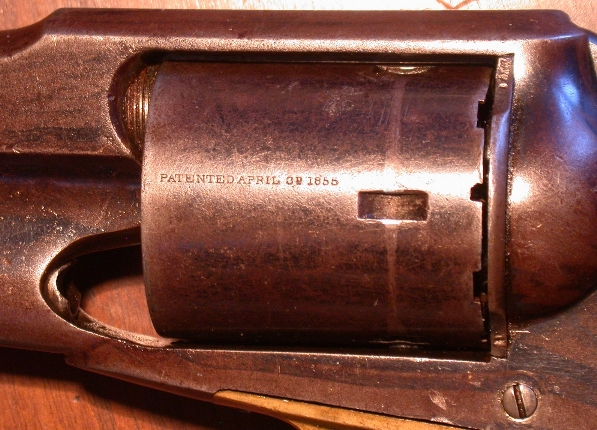.46 rimfire on:
[Wikipedia]
[Google]
[Amazon]
.46 rimfire is a family of
 The .46 Short was used in the first large-caliber metallic cartridge revolvers available. Previously Smith & Wesson, who owned the Rollin White patent, had produced the
The .46 Short was used in the first large-caliber metallic cartridge revolvers available. Previously Smith & Wesson, who owned the Rollin White patent, had produced the
rimfire cartridge
Rimfire ammunition is a type of firearm metallic cartridge whose primer is located within a hollow circumferential rim protruding from the base of its casing. When fired, the gun's firing pin will strike and crush the rim against the edge o ...
s which were chambered in revolvers and rifles in the late 19th and early 20th centuries. They were primarily made in short, long and extra long lengths; however, a variety of other lengths were designed. Manufacturers in the USA discontinued making .46 Short and .46 Long ammunition after the country's entrance into World War I
World War I (28 July 1914 11 November 1918), often abbreviated as WWI, was one of the deadliest global conflicts in history. Belligerents included much of Europe, the Russian Empire, the United States, and the Ottoman Empire, with fightin ...
in 1917; however, production of .46 Extra Long continued after the war.
History
Model 1 Model 1 may refer to:
* Austin Model 1, a semi-empirical method for the quantum calculation of molecular electronic structure in computational chemistry
* Boeing Model 1, a United States single-engine biplane seaplane aircraft
* Breese-Dallas Model ...
in .22 Short
.22 Short is a variety of .22 caliber (5.6 mm) rimfire ammunition. Developed in 1857 for the first Smith & Wesson revolver, the .22 rimfire was the first American metallic cartridge. The original loading was a bullet and of black powd ...
and Model 2 in .32 Short. In 1868, Remington paid a royalty fee to Smith & Wesson for use of the Rollin White patent and began to produce .46 Short metallic cartridge conversions for their New Model Army. These converted revolvers were also capable of firing the .46 Long cartridges when they were introduced a few years later.
Technical background
The Remington New Model Army was a .44 caliberpercussion cap
The percussion cap or percussion primer, introduced in the early 1820s, is a type of single-use percussion ignition device for muzzle loader firearm locks enabling them to fire reliably in any weather condition. This crucial invention gave rise ...
revolver. In the nomenclature of the time, .44 caliber referred to the bore diameter of the barrel which was nominally 0.440". The grooves of the rifling were .006-.007" deep so the groove diameter was nominally 0.451-0.454". These revolvers were generally loaded with a .457" diameter lead ball (48-gauge), ensuring a good seal in the chamber. On conversion to cartridge ammunition, the nomenclature changed so that the name of the cartridge was based on the size of the projectile, hence the .46 Short (0.458" diameter bullet) fit the .44 caliber revolver.
See also
*Table of handgun and rifle cartridges
This is a table of selected pistol/ submachine gun and rifle/machine gun cartridges by common name. Data values are the highest found for the cartridge, and might not occur in the same load (e.g. the highest muzzle energy might not be in the sa ...
References
{{DEFAULTSORT:46 rimfire Pistol and rifle cartridges Rimfire cartridges Cartridge families